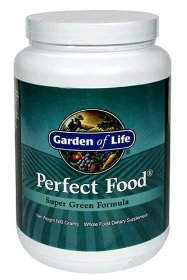 Green Food– Nature’s Powerhouse
Green Food– Nature’s Powerhouse
Functions
In case you haven’t noticed, a very large and impressive category of “green foods” has
established itself within the domain of the natural foods industry. The GREEN MACHINE has
permeated every sector, providing nourishment and life’s missing ingredients to athletes,
young children, busy executives and convalescing seniors. So many of us are adding these
concentrated, freeze-dried superfoods to our dietary menu, hoping for more energy,
improved detoxification and a reliable source of antioxidants, enzymes, vitamins and
minerals.
Let’s be honest. Few of us consume the quantity of organic green vegetables we know are
necessary to augment a good diet. Green plants, like spinach, kale, spirulina and chlorella,
sustain our bodies with chlorophyll – that magnesium rich, alkaline green pigment
responsible for converting the energy of the sun into living matter. In fact
chlorophyll should really be classified as an essential nutrient. Its positive affects on
wound healing, organ restoration and athletic performance are truly phenomenal.
Many excellent varieties and choices of green foods exist – powdered mixtures which combine
a plethora of exotic and health-promoting substances, such as plant extracts, enzymes,
lecithin, friendly bacteria (probiotics), alfalfa, barley, wheat grass, bee pollen, seaweed – all in
a base of algae, the focus of this article.
Spirulina is a blue-green algae. Its natural blue pigment is called phycocyanin, a compound
known to protect the kidneys from the adverse effects of certain drugs. Spirulina has a
filamentous structure with soft cell walls that are easily digested. Spirulina is about 60%
protein, so in terms of protein density it stands alone in naturally occurring foods. To give you
a practical perspective, 10 grams of spirulina provides 6 grams of protein, compared to the
same weight of fresh whole egg (1.2g or 12%) goats milk (.4g or 4%) halibut (2.7g or 27%)
soybeans (1.7g or 17%) or venison (3g or 30%). In terms of net protein utilization (NPU)
however, spirulina takes a back seat to eggs (94%), milk (82%), fish (80%) chicken (67%)
and soy (61%).
Spirulina scores a modest 57%, but because it is so high in total
protein content, it actually outscores every example mentioned in terms of total
usable protein. spirulina sports a milligram of iron per gram, thousands of bioactive
enzymes, omega-6 and omega-3 fatty acids, trace elements, a 2:1 potassium to
sodium ratio, 2 mcg of B-12 analogues, superoxide dismutase (SOD), 10 mg of
gamma linolenic acid (GLA), mixed carotenoids and 3 mg of beta-carotene, making it
the world’s most concentrated source of this provitamin. Most people are carotenoid
deficient and taking spirulina as a supplement could immediately remedy this
concern.
Supplement Recommendations
I have consumed spirulina for more than twenty years in powder, capsule and tablet form. My
favourite method involves adding 10 grams of Hawaiian spirulina pacifica to my post-workout
protein shake, where it is mixed into a slurry in a blender with fresh raw bee pollen and whey
protein isolate (among other things such as organic fruit, The Sport Oil, creatine, etc…). I also
use a green mix which includes spirulina and chlorella. First time users should start out with
500-1000mg and build up gradually. It’s one of Nature’s most potent super foods, so ease into
it just like exercise. Spirulina can be taken before exercise, between meals or combined with
other foods. Get creative.
*An excerpted article from www.coryholly.com/article
